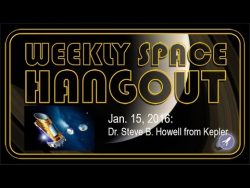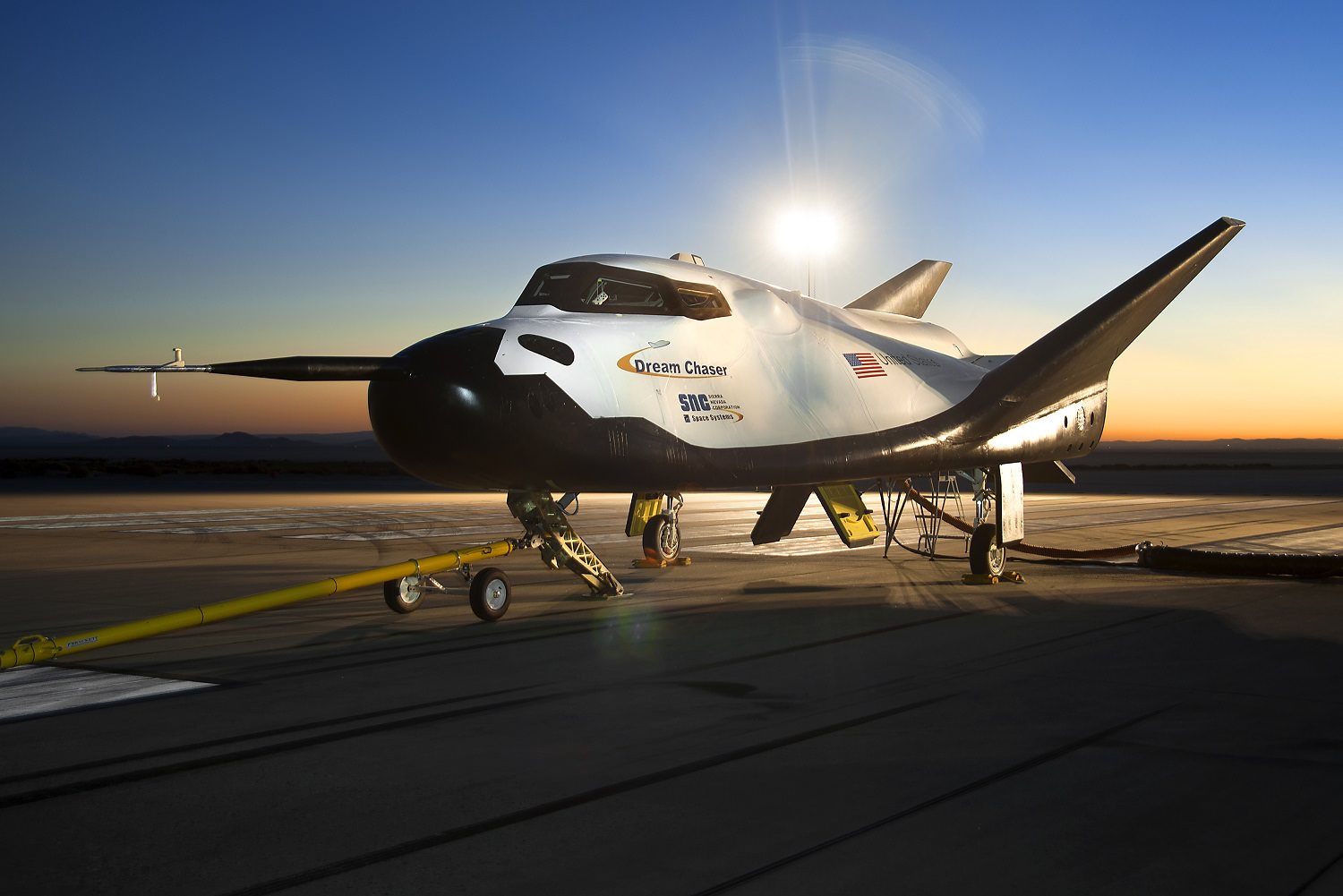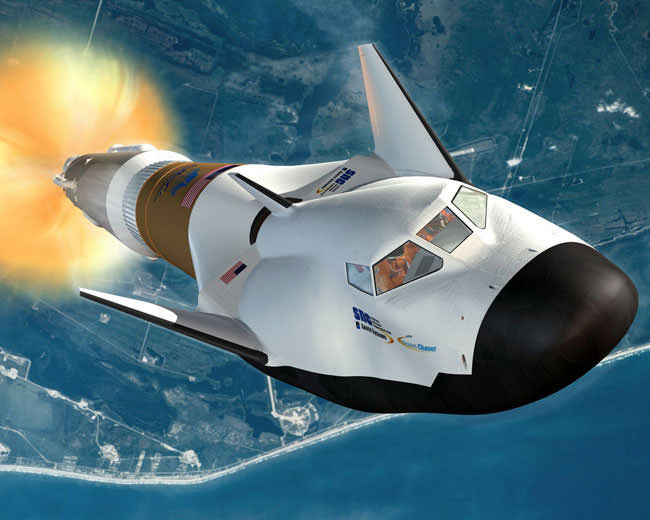After a journey spanning almost two decades, Sierra Nevada Corporation’s Dream Chaser reusable spaceplane, named Tenacity, is officially undergoing environmental testing at NASA’s Neil Armstrong Test Facility located at NASA’s Glenn Research Center in anticipation of its maiden flight to the International Space Station (ISS), currently scheduled for April 2024. The environmental testing consists of analyzing the spacecraft’s ability to withstand rigorous vibrations during launch and re-entry, along with the harsh environment of outer space, including extreme temperature changes and vacuum conditions. This testing comes after Sierra Space announced the completion of Tenacity at its facilities in Louisville, Colorado last month, along with the delivery of Sierra Space’s cargo module, Shooting Star, to the Neil Armstrong Test Facility that same month, as well.
Continue reading “Dream Chaser is Getting Tested at NASA”Carnival of Space #497
Welcome, come in to the 497th Carnival of Space! The Carnival is a community of space science and astronomy writers and bloggers, who submit their best work each week for your benefit. I’m Susie Murph, part of the team at Universe Today and CosmoQuest. So now, on to this week’s stories!
Continue reading “Carnival of Space #497”
Weekly Space Hangout – Jan. 15, 2016: Dr. Steve B. Howell from Kepler
 Host: Fraser Cain (@fcain)
Host: Fraser Cain (@fcain)
Special Guest: Dr. Steve B. Howell, Project Scientist on Kepler to discuss the great new results coming form the K2 mission – the repurposed Kepler mission.
Guests:
Morgan Rehnberg (cosmicchatter.org / @MorganRehnberg )
Alessondra Springmann (@sondy)
Paul Sutter (pmsutter.com / @PaulMattSutter)
Kimberly Cartier (@AstroKimCartier )
Dave Dickinson (@astroguyz / www.astroguyz.com)
Continue reading “Weekly Space Hangout – Jan. 15, 2016: Dr. Steve B. Howell from Kepler”
Weekly Space Hangout – Oct. 16, 2015: Dr. Carolyn Porco and Cassini Update; Sexual Harassment in Astronomy and Academia
Host: Fraser Cain (@fcain)
Special Guest: Dr. Carolyn Porco is the leader of the Cassini Imaging Science team and the Director of the Cassini Imaging Central Laboratory for Operations (CICLOPS) at the Space Science Institute in Boulder, Colorado.
Guests:
Pamela Gay (cosmoquest.org / @cosmoquestx / @starstryder)
Morgan Rehnberg (cosmicchatter.org / @MorganRehnberg )
Kimberly Cartier (@AstroKimCartier )
Dave Dickinson (@astroguyz / www.astroguyz.com)
Nicole Gugliucci (cosmoquest.org / @noisyastronomer)
Alessondra Springmann (@sondy)
Rhys Taylor (G+: Rhys Taylor)
Continue reading “Weekly Space Hangout – Oct. 16, 2015: Dr. Carolyn Porco and Cassini Update; Sexual Harassment in Astronomy and Academia”
Weekly Space Hangout – April 24, 2015: Bas Lansdorp, CEO of Mars One
Host: Fraser Cain (@fcain)
Special Guest: Bas Lansdorp, CEO of Mars One
Guests:
Morgan Rehnberg (cosmicchatter.org / @MorganRehnberg )
Brian Koberlein (@briankoberlein)
Alessondra Springmann (@sondy)
Dave Dickinson (@astroguyz / www.astroguyz.com)
Continue reading “Weekly Space Hangout – April 24, 2015: Bas Lansdorp, CEO of Mars One”
Weekly Space Hangout – Jan 9, 2015: Andy Weir of “The Martian”
Host: Fraser Cain (@fcain)
Special Guest: Andy Weir , author of “The Martian”
Andy was first hired as a programmer for a national laboratory at age fifteen and has been working as a software engineer ever since. He is also a lifelong space nerd and a devoted hobbyist of subjects like relativistic physics, orbital mechanics, and the history of manned spaceflight. “The Martian” is his first novel.
Guests:
Morgan Rehnberg (cosmicchatter.org / @cosmic_chatter)
Ramin Skibba (@raminskibba)
Brian Koberlein (@briankoberlein)
Dave Dickinson (@astroguyz / www.astroguyz.com)
Nicole Gugliucci (cosmoquest.org / @noisyastronomer)
Continue reading “Weekly Space Hangout – Jan 9, 2015: Andy Weir of “The Martian””
Dream Chaser Spacecraft Maker Loses NASA Crew Contract Protest

Update, 4 p.m. EST: Sierra Nevada’s statement, which was posted after the story was first published, is now mentioned below.
Sierra Nevada’s protest concerning NASA’s commercial crew program was turned down today (Jan. 5), according to a statement from the U.S. Government Accountability Office.
The company is developing a spacecraft called the Dream Chaser, which was in competition for NASA funding along with Boeing’s CST-100 and SpaceX’s Dragon to bring crews to the International Space Station. A few months ago, NASA awarded further development money to Boeing and SpaceX, prompting a protest from Sierra Nevada.
At the time, Sierra Nevada both protested the decision and requested a stop-work order on all commercial crew work. The stop-work order was lifted fairly quickly, but the protest remained under review. From today, this was the crux of the GAO statement, which you can read in full here:
In making its selection decision, NASA concluded that the proposals submitted by Boeing and SpaceX represented the best value to the government. Specifically, NASA recognized Boeing’s higher price, but also considered Boeing’s proposal to be the strongest of all three proposals in terms of technical approach, management approach, and past performance, and to offer the crew transportation system with most utility and highest value to the government. NASA also recognized several favorable features in the Sierra Nevada and SpaceX proposals, but ultimately concluded that SpaceX’s lower price made it a better value than the proposal submitted by Sierra Nevada.
In making its selection decision, NASA concluded that the proposals submitted by Boeing and SpaceX represented the best value to the government. Specifically, NASA recognized Boeing’s higher price, but also considered Boeing’s proposal to be the strongest of all three proposals in terms of technical approach, management approach, and past performance, and to offer the crew transportation system with most utility and highest value to the government. NASA also recognized several favorable features in the Sierra Nevada and SpaceX proposals, but ultimately concluded that SpaceX’s lower price made it a better value than the proposal submitted by Sierra Nevada.
Other key points:
- The prices for each proposal were as follows: Sierra Nevada was $2.55 billion, Boeing’s was $3.01 billion and SpaceX’s $1.75 billion.
- NASA, the GAO said, had “no undue emphasis” on any proposal’s schedule or the chances of a particular system making it to orbit by 2017. Also, the agency did say in its request for proposals that the 2017 certification goal would be a part of the process — a different point than what Sierra Nevada argued, who said the agency had added that stipulation while the process was underway.
- NASA’s review of SpaceX’s price and “financial resources” was adequate, along with its evaluation of the competing proposals in terms of mission suitability and past performance. This was in contrast to Sierra Nevada’s argument.
This is part of what Sierra Nevada had to say about the decision. The company also said it plans to maintain ties with NASA. The full statement is here.
While the outcome was not what SNC expected, we maintain our belief that the Dream Chaser spacecraft is technically very capable, reliable and was qualified to win based on NASA’s high ratings of the space system. We appreciate the time and effort contributed to this process by the GAO and NASA to fully evaluate such a critical decision for the United States …
SNC also plans to further the development and testing of the Dream Chaser and is making significant progress in its vehicle design and test program. In addition, SNC is continuing to expand its existing, while developing new, partnerships domestically and abroad in order to expand the multi-mission flexibility of the system, reduce overall long-term costs of the vehicle and ensure long-term affordability and sustainability for the Dream Chaser.
A public record of the decision is expected in a few weeks. Right now, due to the proprietary nature of the information, only NASA personnel and a few “outside counsel” are able to view it, the GAO added.
Weekly Space Hangout – Dec. 5, 2014: Orion’s Successful Launch!
Host: Fraser Cain (@fcain)
Guests:
Morgan Rehnberg (cosmicchatter.org / @cosmic_chatter)
Ramin Skibba (@raminskibba)
Continue reading “Weekly Space Hangout – Dec. 5, 2014: Orion’s Successful Launch!”
Protest Delays NASA Commercial Crew Spacecraft Work: Report
NASA told two companies to halt work on the next phase of its commercial crew program — the spacecraft expected to replace Russian ones ferrying astronauts to the International Space Station — because of a protest related to the contract award, according to media reports.
Sierra Nevada Corp. (SNC) filed a complaint on Sept. 26, shortly after its Dream Chaser shuttle-like design was not selected for further funding under the Commercial Crew Transportation Capability (CCtCap) phase of the program. Competitors SpaceX and Boeing each received billions of dollars for further development for their Dragon and CST-100 spacecraft, which are expected to start flying around 2017.
A Spaceflight Now report, quoting NASA spokesperson Stephanie Schierholz, said the agency told both selectees that they must “stop performance of the CCtCap contract” pending the result of the challenge, which is before the Government Accountability Office. The office’s deadline for a response is Jan. 5, the report said.
In a statement, SNC said this is the first fight it undertook in relation to a government contract in more than five decades of operations. “Inconsistencies” in the process, SNC added, prompted it to go forward with the protest:
Importantly, the official NASA solicitation for the CCtCap contract prioritized price as the primary evaluation criteria for the proposals, setting it equal to the combined value of the other two primary evaluation criteria: mission suitability and past performance. SNC’s Dream Chaser proposal was the second lowest priced proposal in the CCtCap competition. SNC’s proposal also achieved mission suitability scores comparable to the other two proposals. In fact, out of a possible 1,000 total points, the highest ranked and lowest ranked offerors were separated by a minor amount of total points and other factors were equally comparable.
NASA administrator Charles Bolden declined to comment on the situation last week in response to questions from reporters at the International Astronautical Congress in Toronto, Canada, citing the legal situation.
Weekly Space Hangout – Oct. 3, 2014: Islands, Earwigs and Other Mysteries!
Host: Fraser Cain (@fcain)
Guests:
Morgan Rehnberg (cosmicchatter.org / @cosmic_chatter)
David Dickinson (Astroguyz.com / @astroguyz)
Ramin Skibba (@raminskibba)
Brian Koberlein (@briankoberlein)
Continue reading “Weekly Space Hangout – Oct. 3, 2014: Islands, Earwigs and Other Mysteries!”



